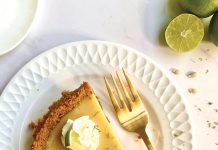 The practice of fermentation has been used to prepare and store food for thousands of years. Popular daily staples, including bread, coffee, beer and wine, undergo fermentation, and the practice is celebrated for its ability to imbue foods with probiotic qualities. Within a raw diet, fermentation can be a healthy and flavorful preparation method that can be applied to a variety of vegetables and drinks. However, store-bought fermented food is often loaded with salt and also may have undergone pasteurization, so home preparations are recommended.
The practice of fermentation has been used to prepare and store food for thousands of years. Popular daily staples, including bread, coffee, beer and wine, undergo fermentation, and the practice is celebrated for its ability to imbue foods with probiotic qualities. Within a raw diet, fermentation can be a healthy and flavorful preparation method that can be applied to a variety of vegetables and drinks. However, store-bought fermented food is often loaded with salt and also may have undergone pasteurization, so home preparations are recommended.
One of the most common fermented raw foods is sauerkraut, which can easily be made at home by chopping cabbage, sprinkling it with salt, squeezing out the juices and then submerging the cabbage in its juices inside a jar for roughly three to five days. Kombucha, a fermented drink made from tea, sugar, bacteria and yeast, can also be made at home—though it requires more skill than sauerkraut. To learn more about fermented foods, peruse The Art of Fermentation: An In-Depth Exploration of Essential Concepts and Processes from Around the World (Chelsea Green Publishing, $39.95) by Sandor Katz. Katz’s book is packed with useful information for the raw-food devotee and fermentation fan.
Interested in making some kombucha on your own? Try the method below and get brewing!
Equipment: 
- One glass jar (size depends on amount of tea you’re brewing; this recipe is designed to make one quart)
- Wooden or plastic spoon
- Breathable cover/lid (a paper coffee filter works well)
- Rubber band to secure
- Mesh plastic strainer
- Airtight, glass container for storage of final product
Ingredients:
- 3 cups of warm water
- Kombucha SCOBY
- 1/2 cup starter tea from another kombucha batch or distilled white vinegar
- 2 tea bags or 1 1/2 tsp. loose leaf tea (preferrably green, black or any tea that does not contain oil)
- 1/4 cup sugar (if you do not want to use regular sugar, substitute organic evaporated cane crystals)
Method:
- Prepare the sweet tea by mixing hot water (hot enough to steep the tea but not boiling) and sugar in a glass jar. Add tea and allow to steep. Remove tea and let the mixture cool to room temperature. All tea must be removed before moving on to the next step.
- Either purchase a SCOBY (symbiotic culture of bacteria and yeast) online or obtain a SCOBY from someone who has previously brewed kombucha. Gently add the starter tea or vinegar and the SCOBY to the jar. Cover it tightly with the coffee filter and secure with a rubber band.
- For the fermentation stage, place the jar in a location that is between 70 and 80 degrees Fahrenheit and out of direct sunlight. Allow the tea to ferment for roughly 7 days. You can let it ferment for longer if you prefer a bitter tasting tea, but this shorter time period results in a sweeter taste. During this process, the tea wlll form a baby SCOBY at its surface.
- When fermentation is complete, gently remove the original SCOBY and the newly formed SCOBY and place in a new batch of sugar tea or aside in a clean bowl.
- Strain the remaining liquid through a mesh plastic strainer and into a new, airtight glass container. Save a small amount for a starter tea batch. At this point, you can flavor the tea with fruit or herbs if desired. Secure the airtight lid and let sit at room temperature for at least two days to produce carbonation. Then, your tea is ready.














Facebook Comments